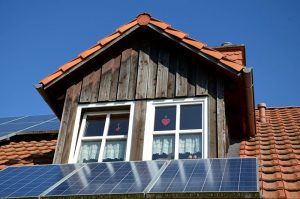When it comes to solar installations on small and medium-sized businesses (SMBs), the 30-kilowatt to 500-kilowatt range has been a no-man’s land for solar installers.
According to Lyndon Rive, SolarCity’s CEO, it’s been “difficult to service this market cost-effectively,” despite the SMB market being “bigger than the large commercial business market.”
The CEO notes that many commercial jobs in the 100-kilowatt to 300-kilowatt range are turned down by leading solar providers. As Shayle Kann, senior VP of GTM Research, has pointed out, PV systems below 1 megawatt have dropped in national market share of commercial installations over the last few years.
There are pinch points in the SMB contractor bidding process, in credit and financing, and in transaction costs and timelines that have thwarted the efforts of installers. SolarCity believes its new SMB initiative, launching today in California, can better address this underserved and neglected solar market.
Here are the three legs of the initiative.
- Lowering costs with new hardware: SolarCity’s ”snap-together” PV panel-mounting system and an east-west orientation lets SMBs fit 20 percent to 50 percent more PV panels on a roof than standard south-facing systems, while capturing peak power production over a longer period of the day, according to the firm. SolarCity claims that allows more efficient sizing and operation of the solar inverter. The mounting system is designed to address some of the workflow and logistical issues found in real-world commercial rooftop applications.
- PACE financing: As Rive told GTM, “Residential [solar] has a FICO score — and people pay their bills. There’s no credit-underwriting process or rating for small commercial.” SolarCity has teamed with Renew Financial to let SMBs combine SolarCity’s financing with a property-assessed clean energy (PACE) program. Rive said, “Commercial PACE is not new. What is new is getting the cost to where it can work.” In this program, an SMB signs a standard commercial solar lease with SolarCity which “finances the upfront cost much as it would under a traditional solar lease or power-purchase agreement, and in turn the PACE program allows the business to pay the solar payment on its property tax bill.” The initial effort will be with theCaliforniaFIRST program.
- Mobilizing in-house crews: Because of the sporadic nature of the business, most commercial solar developers subcontract installation through a lengthy and costly bidding process. Rive said it is “very similar to the way residential solar used to work in 2007 or 2008.” SolarCity aims to scrub 30 percent from the cost of installing small commercial projects by using its own dedicated commercial crews. Rive sees it as another move toward vertical integration and “the only way you take out cost.”
Rive noted, “As a small business, you have the opportunity to use solar, pay less, and lock in lease payments for 20 years with no investment. With most customers, we’ll save them 5 percent to 20 percent of their utility bill.” There is no price escalator.
GTM Research’s Shayle Kann lauded the “series of incremental improvements” being used to “crack the code at each step of the chain,” adding, “That, in and of itself, is meaningful because no one is doing small commercial well.” He said, “Small commercial is really hard, and [SolarCity’s] been bad at it like everyone else.”
Another headwind to be confronted in small commercial is lead generation and customer acquisition.
Despite the challenges, more than 3.2 gigawatts of commercial PV have been installed in the U.S. since the beginning of 2012.
SolarCity “activated” a $1 billion fund earlier this year, looking to finance roughly 300 megawatts of U.S. commercial solar systems. Sungevity recently started its move into the commercial market by joining forces with commercial-scale solar financier Sol Systems with a focus on systems sized between 20 kilowatts and 300 kilowatts. Vivint’s plans to enter into a tax-equity partnership to finance its commercial and industrial ambitions might be shifted by the recent SunEdison acquisition. Greenskies Renewable Energy signed an agreement to install solar arrays on the roofs of 180 Target stores and distribution centers, for a total of approximately 100 megawatts.
GTM Research predicts greater than 40 percent growth in non-residential solar deployment for both 2015 and 2016. According to GTM Research, the cost for a medium-scale commercial system averaged $2.25 per watt at the end of 2014.
Eric Wesoff
July 28, 2015




